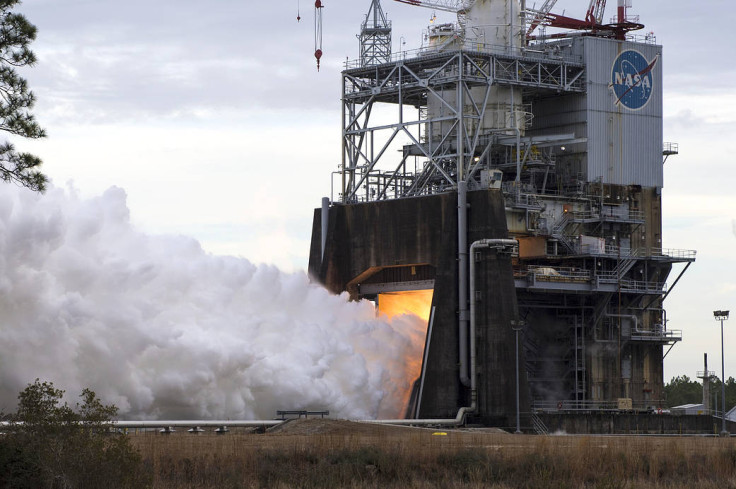Watch Nasa conduct hot fire test of 3D-printed engine parts of Space Launch System
The SLS will carry Orion into deep space to the Moon and then on to Mars.

Nasa conducted its second hot engine test of the year on 1 February, firing up an RS-25 engine that will go into the Space Launch System (SLS). The test was a "full-duration" one, lasting 365 seconds. Nasa has said that the conditions that the engine was put through were akin to an actual launch.
The test concludes green run testing of all four flight controllers that are to be used with the RS-25 engines, Nasa said in a release. They are to be part of the core stages of launchers that are set to take humans into deep space.
One of the highlights of the hot fire test is the use of 3D-printed components, mainly the pogo accumulator assembly for the RS-25 engine. This is the third test for this particular component and Nasa has said that it plans on testing out a number of 3D- printed parts that will end up in the RS-25.
RS-25 was put through various thrust levels that can be expected of a rocket in various scenarios during flight. After the hot fire was completed, flight controllers were removed and the data collected through the test will be thoroughly analysed to see if the brain of the engine is able to accurately communicate with the engine itself.
During engine startup, hot gasses are ejected from the engine at a whopping 13 times the speed of sound, Nasa said in an Instagram post.
SLS has two missions planned for it in the near future. The first is a three-week uncrewed "Exploration Mission 1" (EM-1) which will see an Orion spacecraft being taken into deep space, beyond the moon. Orion will be tested during the mission and be pushed to its limits. Nasa has said that the mission will be the longest a spacecraft intended for humans will stay in outer space without docking and will use one of the most powerful rockets ever built.
The next mission, EM-2, will be crewed and carry astronauts in an Orion spacecraft into deep space to orbit the Moon. EM-2 will have the crew orbit Earth twice, make sure everything works as it should, then shoot for the Moon. Once in lunar orbit, Orion will make a "figure of 8" around the Moon and then head back to Earth.





